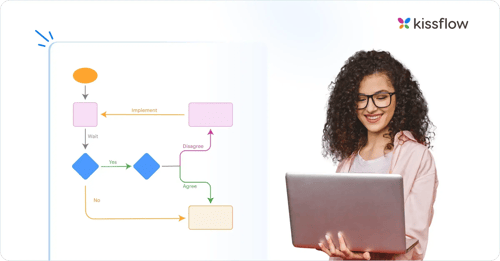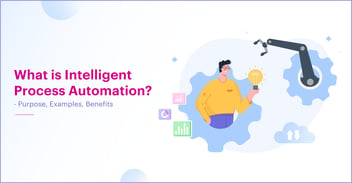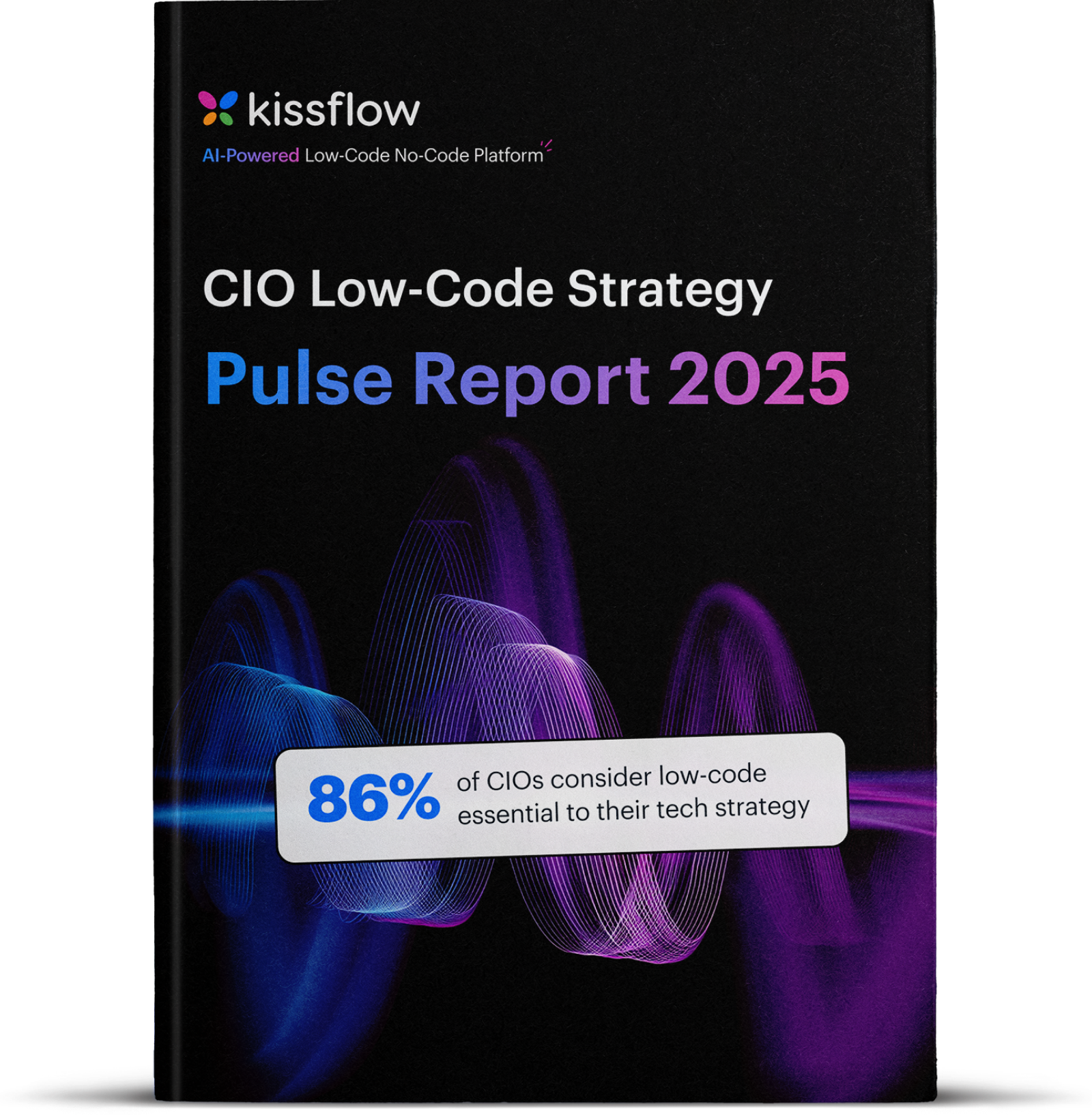
- >
- Workflow Tool>
- BPM Software>
- AI Process Automation
AI Process Automation: The Complete Guide for Smarter Workflows
Modern businesses are drowning in repetitive tasks, manual processes, and workflow bottlenecks that slow growth and frustrate teams. While traditional automation helped tackle some of these challenges, AI process automation represents the next evolutionary leap—transforming how organizations think about workflow efficiency, decision-making, and operational excellence.
What is AI Process Automation?
AI Process Automation is the integration of artificial intelligence technologies with traditional automation to streamline, optimize, and elevate business workflows. Unlike rule-based automation, which follows fixed instructions, AI-driven automation can analyze data, learn from patterns, adapt to changing scenarios, and make intelligent decisions without human intervention.
It combines machine learning, natural language processing, and cognitive reasoning to handle complex tasks such as document processing, customer support, predictive maintenance, fraud detection, and workflow orchestration.
At its foundation, business process automation AI integrates several key elements:
Cognitive decision-making:
Systems that can evaluate multiple variables and make intelligent choices
Pattern recognition:
Ability to identify trends, anomalies, and opportunities in data streams
Self-optimization:
Workflows that automatically adjust parameters based on performance feedback
Natural language understanding:
Processing unstructured text and communications
Predictive capabilities:
Anticipating outcomes and proactively addressing issues
What Makes AI Process Automation Different
Traditional automation excels at repetitive, rule-based tasks—like automatically sending email reminders or updating databases. AI process automation goes further by adding intelligence to these workflows:
Context awareness:
Understanding the "why" behind data patterns
Exception handling:
Managing unexpected scenarios without human intervention
Continuous improvement:
Learning from each interaction to optimize future performance
Unstructured data processing:
Working with emails, documents, images, and voice inputs
Simple examples include AI-powered invoice processing that automatically extracts data and routes approvals based on risk assessment, or intelligent customer support that analyzes ticket sentiment and routes to the most qualified agent.
Understanding the Role of AI in Modern Process Automation
The integration of artificial intelligence in business processes represents a fundamental shift from reactive to proactive operations. Where traditional automation simply executes predefined rules, AI process automation introduces cognitive capabilities that transform workflows into intelligent, self-improving systems.
How AI Enhances Traditional Automation
Pattern Recognition and Decision-Making
AI-powered systems excel at identifying complex patterns across large datasets that would be impossible for humans to process efficiently. In procurement workflows, for example, AI can analyze supplier performance data, market conditions, and historical purchasing patterns to automatically recommend optimal purchasing decisions and flag potential risks.
Predictive Analytics for Proactive Responses
Rather than waiting for issues to occur, business process automation AI uses predictive models to anticipate problems and trigger preventive actions. Customer service workflows can predict which customers are likely to churn based on interaction patterns and automatically initiate retention campaigns.
Natural Language Processing for Unstructured Data
Traditional automation struggles with unstructured information like emails, contracts, and customer feedback. AI for process automation uses NLP to extract meaningful insights from text, enabling workflows to process customer complaints, legal documents, and communication threads intelligently.
The Shift to Outcome-Driven Automation
Traditional automation focuses on completing specific tasks when conditions are met. AI-powered business process automation focuses on achieving business outcomes, adapting strategies based on real-time feedback, and handling new scenarios through pattern recognition and inference.
This evolution enables context-aware processing where intelligent automation considers environmental factors, historical context, real-time conditions, and stakeholder preferences to make nuanced decisions that align with both immediate needs and broader business objectives.
AI vs Traditional Automation: What's the Difference?
Understanding the distinction between traditional automation and AI process automation is crucial for organizations deciding how to modernize their workflows.
Key Differences Comparison
Aspect |
Traditional Automation |
AI Process Automation |
|
Decision Making |
Rule-based, if-then logic |
Context-aware, adaptive reasoning |
|
Data Processing |
Structured data only |
Structured and unstructured data |
|
Learning Capability |
Static rules, manual updates |
Continuous learning and optimization |
|
Exception Handling |
Breaks or requires human intervention |
Handles exceptions through pattern recognition |
|
Maintenance |
Frequent manual updates needed |
Self-optimizing with minimal maintenance |
Benefits of AI Process Automation
Operational Efficiency
-
Reduced Processing Time: AI automation can reduce task completion time by 60-80% compared to manual processes
-
24/7 Operations: Automated systems work continuously without breaks, holidays, or shift changes
-
Error Reduction: Machine learning algorithms minimize human errors, improving accuracy rates by up to 95%
- Resource Optimization: Intelligent allocation of resources based on real-time demand and capacity
Cost Savings
-
Labor Cost Reduction: Automate repetitive tasks, allowing staff to focus on higher-value activities
-
Operational Cost Efficiency: Reduce overhead costs through streamlined processes and reduced waste
-
Predictive Maintenance: Prevent costly equipment failures and unplanned downtime
-
Energy Optimization: AI-driven systems optimize energy consumption and reduce utility costs
Enhanced Decision Making
-
Labor Cost Reduction: Automate repetitive tasks, allowing staff to focus on higher-value activities
-
Operational Cost Efficiency: Reduce overhead costs through streamlined processes and reduced waste
-
Predictive Maintenance: Prevent costly equipment failures and unplanned downtime
-
Energy Optimization: AI-driven systems optimize energy consumption and reduce utility costs
Real-World Examples
Customer Service Workflow
Traditional Approach:
Route tickets based on predefined keywords and categories
Send automatic responses using template messages
Escalate to supervisors after fixed time periods
AI Process Automation Approach:
Analyze ticket content for sentiment, urgency, and complexity
Generate personalized responses based on customer history
Predict resolution time and automatically adjust resource allocation
Identify patterns that indicate systemic issues requiring process improvements
Financial Approval Process
Traditional Approach:
Route approvals based on amount thresholds and departmental rules
Send reminders after predetermined time periods
Require manual intervention for exceptions
Identify patterns that indicate systemic issues requiring process improvements
AI Process Automation Approach:
Assess risk levels based on vendor history, market conditions, and spending patterns
Optimize approval routing based on approver availability and expertise
Predict approval likelihood and suggest modifications to improve success rates
Automatically flag potential compliance issues before they occur
Oil and Gas Operations
Traditional Approach:
Schedule maintenance based on fixed intervals and equipment age
Monitor production through manual data collection and reporting
React to equipment failures after they occur
AI Process Automation Approach:
Predict equipment failures using sensor data and machine learning algorithms
Optimize drilling operations based on geological data and market conditions
Automatically adjust production schedules based on demand forecasting and pipeline capacity
Identify safety risks in real-time and trigger preventive measures
Optimize supply chain logistics for equipment and materials delivery
Manufacturing Workflow
Traditional Approach:
Follow static production schedules regardless of demand fluctuations
Conduct quality control through manual sampling and inspection
Order materials based on predetermined inventory levels
AI Process Automation Approach:
Dynamically adjust production schedules based on real-time demand and supply chain conditions
Implement continuous quality monitoring using computer vision and IoT sensors
Predict equipment maintenance needs to minimize unplanned downtime
Optimize inventory levels using demand forecasting and supplier performance data
Automatically reroute production when bottlenecks are detected
Healthcare Administration
Traditional Approach:
Schedule appointments using basic availability calendars
Process insurance claims through manual verification steps
Alert staff about patient needs through standard notification systems
AI Process Automation Approach:
Optimize appointment scheduling based on patient preferences, provider expertise, and urgency levels
Automatically verify insurance eligibility and predict claim approval likelihood
Analyze patient data to identify high-risk cases requiring immediate attention
Streamline medication management by predicting potential drug interactions
Coordinate care teams based on patient complexity and provider availability
Retail Operations
Traditional Approach:
Manage inventory using basic sales history and seasonal patterns
Price products based on fixed markup rules and competitor monitoring
Handle returns through standard policy application
AI Process Automation Approach:
Predict demand fluctuations using weather data, social trends, and economic indicators
Implement dynamic pricing strategies that optimize for profit margins and competitive positioning
Personalize customer experiences through behavioral analysis and recommendation engines
Optimize supply chain logistics to reduce costs and improve delivery times
Automatically detect and prevent fraudulent transactions in real-time
Streamline return processes by predicting return likelihood and automating refund approvals
Key Technologies Behind AI Process Automation
The power of AI process automation emerges from the sophisticated integration of multiple technologies, each contributing unique capabilities to create truly intelligent workflows.
Core AI Technologies
Machine Learning in Automation Machine learning algorithms form the backbone of intelligent automation, enabling systems to learn from data patterns and improve performance over time. Applications include supervised learning for outcome prediction, unsupervised learning for pattern discovery, and reinforcement learning for decision optimization.
Natural Language Processing (NLP) NLP capabilities transform how automated systems handle human communication:
-
Text analytics: Extracting insights from documents, emails, and customer feedback
-
Sentiment analysis: Understanding emotional context in customer interactions
-
Intent recognition: Interpreting user requests and routing them appropriately
-
Language translation: Enabling global process automation across language barriers
Computer Vision Computer vision technology enables automated systems to extract information from images, scanned documents, and PDFs, converting visual data into actionable insights for workflow processing.
Enhanced Robotic Process Automation
Traditional robotic process automation (RPA) focuses on mimicking human interactions with software applications. When enhanced with AI capabilities, RPA becomes significantly more powerful:
-
Intelligent document processing: AI-enhanced RPA can process invoices, contracts, and forms with varying formats
-
Smart decision making: Instead of following rigid rules, AI-powered RPA bots can evaluate multiple variables and make contextual decisions
-
Exception management: AI-enhanced systems can recognize patterns in exceptions and develop strategies to handle them automatically
Process Mining and Analytics
Workflow Pattern Analysis Process mining technology analyzes event logs and system data to create visual maps of actual workflow execution, revealing gaps between designed processes and real-world operations.
Performance Optimization By examining timestamp data and resource utilization patterns, process mining identifies where workflows slow down and provides data-driven insights for optimization.
Why Industries Adopt AI in Process Automation
Different industries face unique operational challenges that make AI process automation particularly valuable.
Financial Services: Risk and Compliance
Financial institutions leverage AI process automation to:
-
Fraud detection: Analyze transaction patterns and customer behavior in real-time to identify suspicious activities
-
Regulatory compliance: Automatically monitor transactions and generate compliance reports for evolving regulations
-
Customer onboarding: Streamline KYC processes by automatically extracting information from identity documents and conducting risk assessments
-
Loan processing: Analyze credit applications using hundreds of variables beyond traditional credit scores for faster, more accurate lending decisions
Healthcare: Patient Care and Efficiency
Healthcare organizations use AI for process automation to:
-
Patient intake optimization: Automatically extract information from insurance cards, verify coverage, and optimize appointment scheduling
-
Clinical documentation: Generate clinical notes from voice recordings and suggest appropriate diagnostic codes
-
Predictive patient care: Analyze patient data to predict health deterioration and readmission risks
Supply chain management: Optimize medical supply ordering and predict equipment maintenance needs
Manufacturing: Predictive Operations
Manufacturing companies implement AI process automation for:
-
Predictive maintenance: Monitor equipment performance and predict failure patterns to reduce unplanned downtime
-
Quality control: Use computer vision and machine learning for automated quality inspection with greater accuracy than human inspectors
-
Supply chain optimization: Analyze demand forecasts, supplier performance, and market conditions for optimal procurement and production planning
-
Energy management: Optimize energy consumption and resource allocation based on production demands and environmental conditions
Retail and E-commerce: Personalization at Scale
Retailers use AI process automation to:
-
Dynamic pricing: Adjust pricing in real-time based on demand patterns, competitor analysis, and inventory levels
-
Inventory forecasting: Predict demand patterns across products, seasons, and market conditions to optimize ordering and distribution
-
Customer service automation: Handle routine inquiries and process returns while escalating complex issues appropriately
-
Personalized marketing: Create individualized shopping experiences by analyzing browsing behavior and purchase history
How AI Automation Aligns with Digital Transformation Goals
AI process automation serves as a critical enabler of broader digital transformation initiatives, providing the intelligent infrastructure needed to support data-driven operations and customer-centric strategies.
Enabling Real-Time Operations
Data-Driven Decision Making AI-powered business process automation generates continuous streams of operational data that fuel real-time decision making. Instead of relying on periodic reports, organizations can monitor process performance and adjust operations dynamically based on current conditions.
Predictive Capabilities Digital transformation requires organizations to shift from reactive to proactive operational models. AI for process automation provides predictive insights that enable leaders to anticipate market changes, customer needs, and operational challenges before they impact business performance.
Supporting Cultural Change
Democratizing Analytics AI process automation makes sophisticated analytics accessible to business users without technical backgrounds. Automated reporting and visualization systems ensure that all stakeholders have access to relevant information for decision-making.
Empowering Innovation By automating routine tasks, intelligent systems free employees to focus on creative problem-solving, strategic thinking, and customer relationship building. This shift supports digital transformation goals of innovation and employee engagement.
Accelerating Time-to-Market
Rapid Process Optimization AI process automation enables organizations to test, measure, and refine business processes more quickly than traditional approaches. Machine learning capabilities support continuous improvement cycles that accelerate innovation and competitive response times.
Scalable Framework Intelligent automation provides the infrastructure needed to rapidly scale successful innovations across the organization. Proven automated processes can be replicated and adapted for different departments, products, or markets with minimal additional investment.
Pain Points & Challenges in implementing AI Process automation
Technical Challenges
Legacy System Integration:
Difficulty connecting AI solutions with existing outdated systems
Data Quality Issues:
Inconsistent, incomplete, or siloed data affecting AI performance
Scalability Concerns:
Ensuring automation solutions can grow with business needs
Security and Compliance:
Maintaining data protection and regulatory compliance in automated processes
Organizational Challenges
Change Management:
Resistance from employees concerned about job displacement
Skill Gap:
Lack of internal expertise to implement and maintain AI automation systems
Budget Constraints:
High upfront investment costs and unclear ROI timelines
Process Standardization:
Need to standardize workflows before automation can be effectively implemented
Strategic Challenges
Vendor Selection:
Choosing the right automation platform from numerous available options
ROI Measurement:
Difficulty quantifying benefits and measuring success metrics
Phased Implementation:
Determining the optimal sequence and pace of automation rollout
Governance Framework:
Establishing policies and procedures for responsible AI use
Why No-Code Platforms are the Future of AI Process Automation
The democratization of AI process automation through no-code platforms represents a fundamental shift in how organizations approach intelligent automation. By removing technical barriers and empowering business users to create sophisticated automated workflows, no-code solutions are accelerating adoption and innovation.
Citizen Developer Empowerment
No-code platforms enable business users without programming backgrounds to create AI-powered workflows that previously required specialized technical skills:
-
Domain experts as automation creators: Process owners who understand business requirements can directly build and modify automated workflows
-
Rapid iteration and experimentation: Business users can quickly test automation ideas and make adjustments based on real-world feedback
-
Reduced development backlogs: Organizations can address automation needs without waiting for IT resources
-
Local innovation: Departments can create customized automation solutions for specific needs
Breaking Down Technical Barriers
No-code platforms abstract AI complexity through:
-
Visual development interfaces: Drag-and-drop designers that represent complex logic through intuitive visual elements
-
Pre-built AI components: Ready-to-use machine learning models, NLP capabilities, and predictive analytics tools
-
Automated model training: Systems that automatically train AI models based on historical data without requiring data science expertise
-
Template libraries: Pre-configured workflow templates for common business processes
Accelerated Value Realization
Rapid Deployment No-code AI process automation platforms enable organizations to move from concept to production much faster:
-
Hours to days implementation: Simple workflows can be created within hours, complex processes within days or weeks
-
Immediate feedback loops: Business users can see results immediately and make real-time adjustments
-
Quick ROI demonstration: Fast implementation enables organizations to demonstrate value and build momentum
Enhanced Collaboration No-code platforms facilitate better collaboration between business and IT teams through shared visual languages and collaborative development environments while maintaining appropriate governance and security controls.
How Kissflow Empowers AI-Driven Automation Without Coding
Kissflow represents a comprehensive approach to AI process automation that combines the power of artificial intelligence with the accessibility of no-code development. The platform enables organizations to create sophisticated, self-optimizing workflows without requiring technical expertise.
Unified Intelligent Automation Platform
No-Code AI Implementation Kissflow abstracts the complexity of AI implementation through user-friendly interfaces:
Smart process templates:
Pre-built workflow templates that incorporate AI capabilities for common business processes
Intelligent form builder:
Forms that use AI to validate inputs, suggest completions, and route submissions based on content analysis
Visual workflow designer:
Intuitive drag-and-drop interface for creating complex automated processes
Built-in AI components:
Pre-configured artificial intelligence capabilities including NLP, predictive analytics, and intelligent decision-making
Advanced AI Features
Intelligent Workflow Routing Kissflow's AI capabilities optimize process execution through:
Dynamic task assignment:
AI analyzes workload patterns, expertise levels, and availability to automatically assign tasks appropriately
Priority-based routing:
Intelligent systems evaluate urgency, importance, and business impact to prioritize workflow execution
Predictive escalation:
AI predicts when processes are likely to miss deadlines and automatically triggers escalation procedures
Built-in AI components:
Workflows that adjust execution paths based on data patterns and real-time conditions
Natural Language Processing Integration The platform incorporates NLP capabilities for:
Smart content extraction:
Automatic extraction of relevant information from emails, documents, and form submissions
Sentiment analysis:
AI that analyzes customer communications to route urgent or sensitive issues appropriately
Intelligent categorization:
Automatic classification and tagging of content based on topic, urgency, and required actions
Predictive Analytics and Insights Kissflow provides intelligent analytics that go beyond traditional reporting:
Performance prediction:
AI models that forecast process completion times and potential bottlenecks
Trend analysis:
Intelligent identification of patterns in process data that inform optimization strategies
Anomaly detection:
Automated identification of unusual patterns that require attention
Optimization recommendations:
AI-generated suggestions for process improvements based on historical data
Enterprise Governance and Control
Balanced Empowerment and Oversight Kissflow balances business autonomy with IT control through:
Role-based access control:
Granular permissions ensuring users access only appropriate processes and data
Audit trail maintenance:
Comprehensive logging of all system activities and decisions for compliance monitoring
Version control:
Complete history of workflow modifications with rollback capabilities
Security framework:
Enterprise-grade security measures including data encryption and compliance standards
Seamless Integration Capabilities
Comprehensive Connectivity Kissflow connects with existing business systems through:
Pre-built connectors:
Ready-made integrations with popular enterprise systems including CRM, ERP, and HRMS platforms
API framework:
Robust API capabilities enabling custom integrations with any system supporting standard protocols
Real-time data sync:
Bi-directional data synchronization ensuring information consistency across connected systems
Legacy system support:
Specialized connectors for older systems that may lack modern API capabilities
Measurable Business Impact
Kissflow provides comprehensive analytics that demonstrate automation value:
ROI calculation:
Automated calculation of return on investment based on time savings, error reduction, and resource optimization
Performance benchmarking:
Comparison of automated processes against industry standards and historical performance
User productivity metrics:
Measurement of individual and team productivity improvements resulting from automation
Scalable value creation:
Support for value scaling across organizational dimensions through process multiplication and complexity handling
Kissflow's approach to AI process automation represents the convergence of powerful artificial intelligence capabilities with accessible, user-friendly development tools. This combination enables organizations to achieve sophisticated automation outcomes while maintaining the agility needed for competitive success in dynamic business environments.
AI process automation represents more than just technological advancement—it's a strategic imperative for organizations seeking to thrive in an increasingly competitive and fast-paced business environment. By combining the power of artificial intelligence with accessible no-code platforms, businesses can create intelligent, self-optimizing workflows that drive efficiency, enhance customer experience, and enable sustainable growth.
The future belongs to organizations that embrace intelligent automation not as a replacement for human capability, but as an amplifier of human potential. With platforms like Kissflow making AI process automation accessible to business users across all departments, the opportunity to transform operations and achieve competitive advantage has never been more attainable.
Ready to transform your workflows with AI process automation?
Explore how Kissflow can help your organization build smarter, more efficient processes without coding complexity.
Get Started
Related Articles











